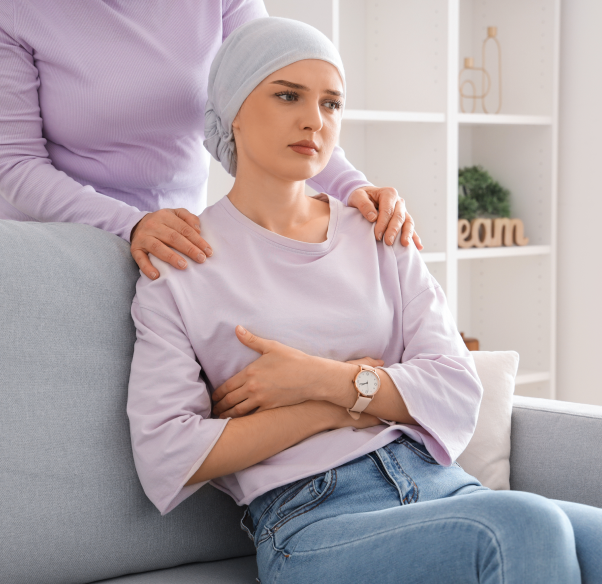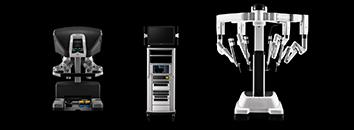Types of Cancers Treated at Gleneagles Hospitals
- Liver Cancer
- Breast Cancer
- Lung Cancer
- Stomach Cancer
- Brain Tumour
- Skin Cancer
- Blood Cancer
At Gleneagles Hospitals: Highly qualified and dedicated full-time medical Oncologists | Complete expertise in the management of haematological malignancies | Personalised chemotherapy to individualise chemo treatment for every patient | Updated with the newer technologies | Practices Targeted therapy | Immunotherapy | Exclusive day care chemotherapy ward | Most patient friendly professional approach
Types of Cancer Treatment
The cancer treatment involves various modalities, often utilised in combination for optimal efficacy. Each treatment method targets cancer cells differently, aiming to either surgically remove tumours, destroy cancerous cells through radiation or drugs, or enhance the body's immune system to combat the disease. The selection of treatment depends on factors such as cancer type, stage, overall health, and patient preferences. Primary cancer treatments include:
Chemotherapy involves using drugs for the treatment of cancer. These drugs destroy cancer cells by entirely stopping or slowing down their growth. Chemotherapy is generally used to treat recurrent cancers ( cancer cells reemerging after the treatment) or metastatic cancers (cancer cells that spread to other parts of the body). Chemotherapy drugs are administered orally, intravenously, and injected directly into the fluid surrounding the brain or the abdominal cavity.
There are three types of chemotherapy.
- Neoadjuvant chemotherapy that is delivered before the surgical or radiation procedures. It is recommended when the tumours are too big to be operated on or when the location of the tumour is difficult to operate. The drugs used in Neoadjuvant chemotherapy reduce the size of the tumour to enable surgery.
- Adjuvant chemotherapy that is delivered after the surgical or radiation procedures. It is recommended to clean up any remaining cancer cells that are not visible in the imaging tests. This treatment helps to reduce the chances of recurrence of cancer.
- Palliative Chemotherapy is recommended to manage the symptoms of cancer.
Side-effects of Chemotherapy
Chemotherapy drugs also tend to destroy the rapidly dividing healthy cells that are present in the intestines, mouth, etc., which results in some side effects. The side effects of chemotherapy drugs generally disappear after the treatment. Some side effects of chemotherapy include
- Hair loss
- Vomiting or nausea
- Anaemia
- Fatigue
- Diarrhoea
- Mouth sores
- Low platelet count
Types of Chemotherapy
- High-dosage Chemotherapy: This method uses a high dosage of medication to destroy cancer cells.
- Standard Chemotherapy: The administration of medications that destroy cancer cells and prevent the growth of infected cells.
- Chemotherapy with a Lower Dose: To destroy malignant cells and prevent their proliferation, chemotherapy medications are administered at a lower dosage.
Chemotherapy is the process of killing cancer cells with chemical substances. Chemotherapy functions by preventing the growth and division of cancer cells.
This therapy is used to treat hormone-dependent or hormone-sensitive cancers that use hormones to grow. Some examples of hormone-sensitive cancers are breast cancer, ovarian cancer, etc. Hormone therapy uses medicines to stop or decrease the production of hormones in the body to stop the growth of cancer cells.
Side-effects of Hormone Therapy
Since hormone therapy involves the reduction or stopping of the production of hormones, there are some side effects due to hormone deficiency. Some side-effects include
- Hot flashes and vaginal dryness
- Tiredness
- Problems of the digestive system such as diarrhoea and constipation
- Weight gain
- Headache
- Memory loss
- Hair loss or thinning
- Joint pains
- Thinning of bones
- Depression
The removal, blocking, or addition of certain hormones to the body is known as hormone therapy in the treatment of cancer. Endocrine therapy, anti-hormonal therapy, and hormonal therapy are some other names for it. Certain forms of cancer utilise the hormones produced by the body to promote their development.
Radiation Therapy is a kind of cancer treatment that targets cancer cells with high-energy X-rays or other particles. Radiation oncologists are medical professionals who specialise in treating cancer with radiation treatment.
Immunotherapy is an innovative procedure in medical oncology that uses the body’s immune cells to stop the growth of Cancer. The procedure activates the body’s immune mechanism to destroy the infected cells. Medical oncologists use the immune cells from the patient’s body or laboratory-made treatments to improve the functioning of the immune system.
Immunotherapy can be categorized into three types.
- Drug Therapy - Drugs used to boost the immune system and create antibodies to destroy the cancer cells.
- Dendritic Cell Therapy - This therapy involves the use of T-cells to fight cancer cells. T-cells are taken from the blood and sent to the laboratory for modification. The modified T-cells are then injected into the patient’s body to fight infection and destroy cancer.
- Cancer Vaccines - Cancer vaccines are injected into the patients to boost the immune system to produce antibodies to kill the antigens and other materials that cause the growth of the cancer cells.
Side Effects of Immunotherapy
Immunotherapy boosts the functioning of the immune system and may result in some side effects such as
- Allergic reactions
- Inflammation
- Pneumonitis
- Fluid retention
- Skin blisters, dryness or redness
- Fatigue
- Bodyache
- Dizziness
- High or low blood pressure
- Edema
A form of Cancer treatment called immunotherapy works by boosting the body's defences against the disease.
Combining conventional cancer treatments with alternative therapies to manage side effects and symptoms is known as integrative medicine.
The process of eliminating a tumour from the body is known as cancer surgery. It is sometimes required to remove part of the surrounding healthy tissue. It is the most traditional kind of cancer treatment, and it is still effective in treating several types of cancers.
In this procedure, cancerous cells in the bone marrow or lymph nodes are eradicated using high doses of chemotherapy drugs. The body is then provided with fresh stem cells through intravenous infusion, either from a donor or the patient. These new stem cells will subsequently regenerate healthy blood cells.
Procedures such as Stem Cell Transplants allow patients whose blood cells were damaged by radiation treatment or heavy chemotherapy to regain stem cells that can proliferate into new blood cells.
There are two types of Targeted Therapy.
- Small Molecule Drug Therapy - These drugs reach inside the cancer cells and target the proteins and block the signals for cell division and cell growth.
- Monoclonal Antibodies - These are laboratory-made antibodies that are similar to the antibodies produced by the immune system. They target the proteins in cancer cells and destroy them.
Side-effects of Targeted Therapy
Though targeted therapy is less harmful than chemotherapy, it does have some rare side effects. Some of them are-
- Liver inflammation
- Diarrhoea
- Acne or skin rashes
- Bleeding
- Hair depigmentation
- High blood pressure
- Gastrointestinal perforation
- Impaired sperm production
- Blood clotting problems
Targeted Therapy is an advanced cancer care treatment that uses drugs to target the specific proteins and genes found in the cancer cells and other cells related to cancer growth. The drugs stop the spread of cancer to other parts of the body.
This involves the use of targeted radioactive rays to eliminate cancer cells in a specific area of the body.
In cases where doctors believe that patients may not be able to tolerate powerful treatments due to specific compatibility issues, they may provide low-risk treatments. While these treatments may not completely eradicate all cancer cells, they can effectively keep them under control for an extended period. The benefits of such therapy include fewer side effects and minimal risks.
These treatments can be either harsh or very gentle. While they do not aim to cure cancer, they can keep the disease in remission and control the symptoms. They are more like maintenance programs.
In addition to non-intensive or intensive treatment, patients should receive supportive care. These medications aid in better symptom control and make the experience a bit easier, but they do not actively combat the cancer cells.
Such care can improve symptom management and help maintain a good quality of life despite all obstacles.
A medical procedure called a haematopoietic stem cell transplant or bone marrow transplant repairs bone marrow that has been damaged or destroyed by an infection, chemotherapy, or illness. During this surgery, blood stem cells are transferred into the bone marrow, where they help the bone marrow regenerate and manufacture fresh blood cells.














